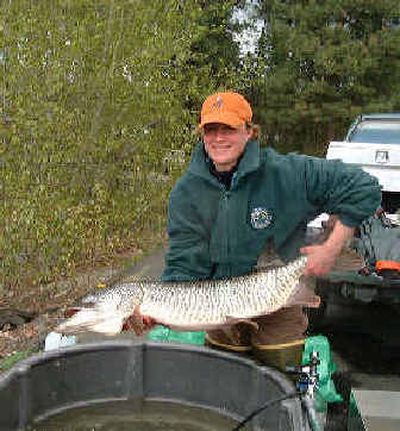Field Reports

NATIONAL FORESTS
Clearwater comments out
The Clearwater and Nez Perce national forests have released a 368-page report summarizing public comments on proposed revisions to their forest management plans.
Among the comments collected last fall are 11,018 letters, e-mails, faxes, comment forms and petitions. When duplicate submissions were subtracted, the forests received 3,908 individual responses. Of those, 3,608 were “form” letters and 11 were petitions.
People were sharply divided on the role of timber harvest on the forests, Clearwater National Forest Supervisor Larry Dawson and Nez Perce National Forest Supervisor Jane Cottrell said in a joint statement. Support for the use of fire as a management tool appears to be growing, they said.
Another major point of contention involved the use of motorized vehicles. “Off-highway vehicle enthusiasts cherish their opportunities and desire more,” Dawson and Cottrell said. “A number of others dislike the machines and would like to see their use severely restricted.
“While it is impossible to develop a plan that satisfies everyone’s desires, we are doing our best to use the information to develop management scenarios that are balanced, sustainable and within the parameters of the law,” the supervisors said.
The report is available on the Web at www.fs.fed.us/cnpz.
Rich Landers
WILDLIFE MANAGEMENT
Wasting disease plan out
Montana has so far escaped outbreaks of chronic wasting disease in wild deer and elk, but officials are preparing for what could be inevitable.
“We’re afraid, and you can see why we’re afraid,” Tim Feldner of the state Department of Fish, Wildlife and Parks said this spring at symposium on the wildlife disease.
The symposium, which drew about 100 people, was held by Rocky Mountain Laboratories, a federal lab near Hamilton that has been studying the family of brain-wasting diseases for 40 years.
The disease has been confirmed in wild deer and elk just 100 miles from the state border, both in Wyoming to the south and Saskatchewan to the north, he said. Montana also had confirmed cases of the disease in animals raised at game farms in the state in the late 1990s.
Montana is proposing a state plan to prevent chronic wasting disease from showing up in the state or to quickly contain the disease if it does occur, officials said.
Proposals call for banning the import of any game-farmed deer and elk from states that have confirmed cases of chronic wasting disease and making it illegal to feed deer and elk. This spring, the agency announced it is closing the state’s rehabilitation center for orphaned fawns.
Previously, FWP has taken in about 50 fawns a year at a central rehabilitation center in Helena. The animals were cared for until they were old enough to be returned to the wild.
People who bring in fawns this spring are being told to take them back to where they found them, or they will be euthanized.
Staff and wire reports
NATURAL AREAS
Dishman Hills dogged
The latest dog problem in the Dishman Hills Natural Area has nothing to do with barking, biting or pooping.
The problem involves deceased dogs whose owners have decided a natural area is a good place to bury and enshrine them.
“Some of the grave sites are rather elaborate memorials,” according to the Dishman Hills Natural Area Association newsletter, which features a photo of one site outlined with brick and adorned with photos.
“We have no choice but to remove these sites, as we have with geocaches, letter boxes and transient camps,” said the association, a non-profit group that has worked for decades to raise money to purchase, preserve and maintain the natural area.
“These special interest activities really have no place in public natural space and they encourage people to do off-trail hiking, which we feel has too much environmental impact,” the newsletter said.
The organization recommends that “you bury pets in your own backyard.”
Rich Landers
WILDLIFE
Painted ladies on menu
Painted lady butterflies were a smash hit along Highway 95 between Coeur d’Alene and Riggins last weekend.
Automobiles did the smashing and the resulting”roadkill” was a hit with birds.
“A good number of blackbirds, starlings and cowbirds were feasting on the ‘roadkill’ from migrating painted lady butterflies,” said Gary Kuiper, a Spokane member of local group that reports birding observations by e-mail.
“A few of these scavenger birds themselves became road kills and were, in turn, scavenged by the magpies.
“It seems that except for the yellow fatty splash on the windshields, not much else was wasted as even the house sparrows were cleaning (the butterflies and bugs ) off the automobile grills at the service station.”
Plenty of butterflies survived the carnage.
“It was reassuring to watch the continuing stream of painted ladies pass through my backyard upon my return (to Spokane),” Kuiper said. “At least a few made it this far.”
Rich Landers
FISHING
Record peamouth caught
A Washington state record peamouth weighing 1.03 pounds was caught in the Snake River near Boyer Park last weekend.
Eric Weitze of Colfax was fishing for pikeminnows when he made the record catch.
“He said he was just plunkin’ off shore with a worm,” said Chris Donley, Washington Department of Fish and Wildlife district biologist in Spokane. “The peamouth is in the minnow family and it’s a native, a really cool fish.”
Rich Landers